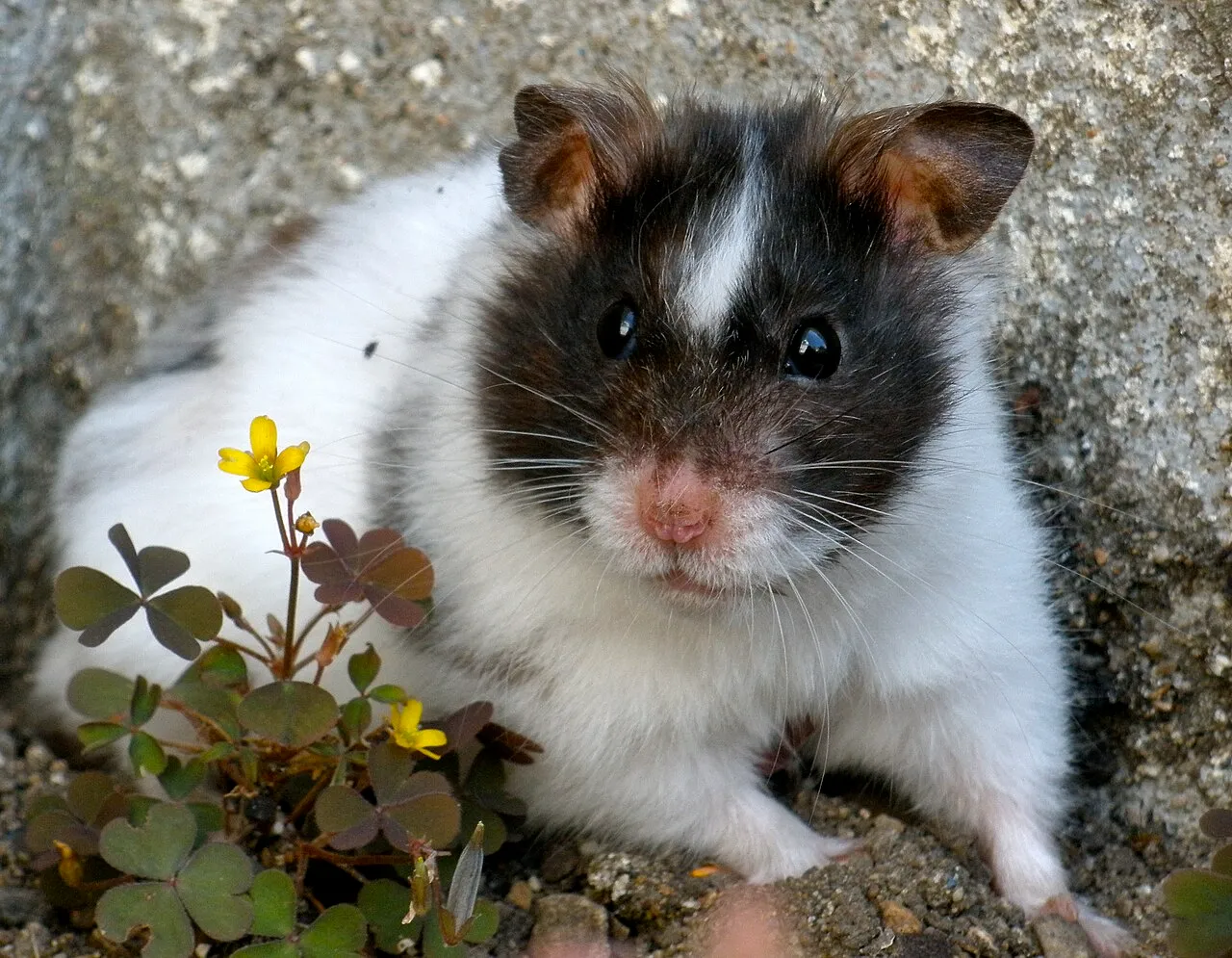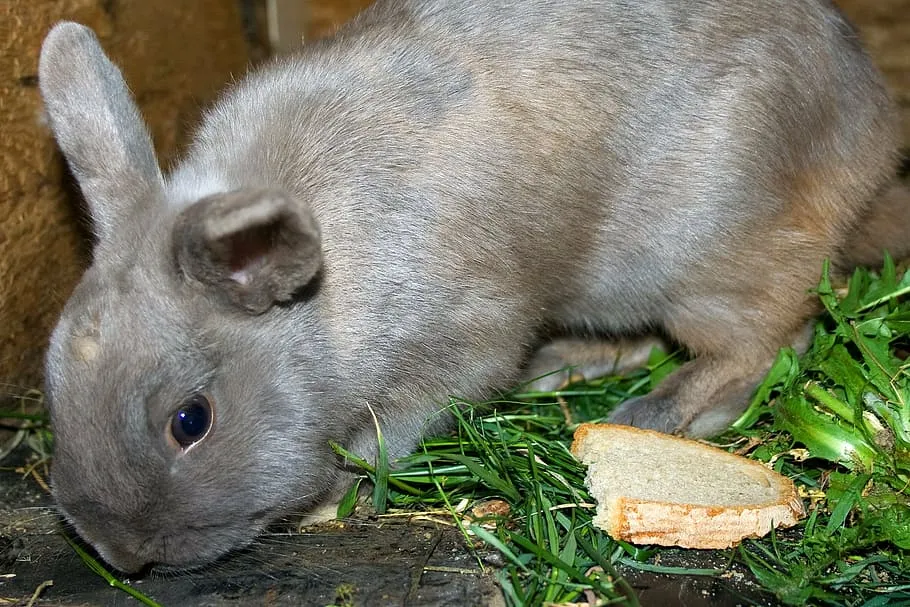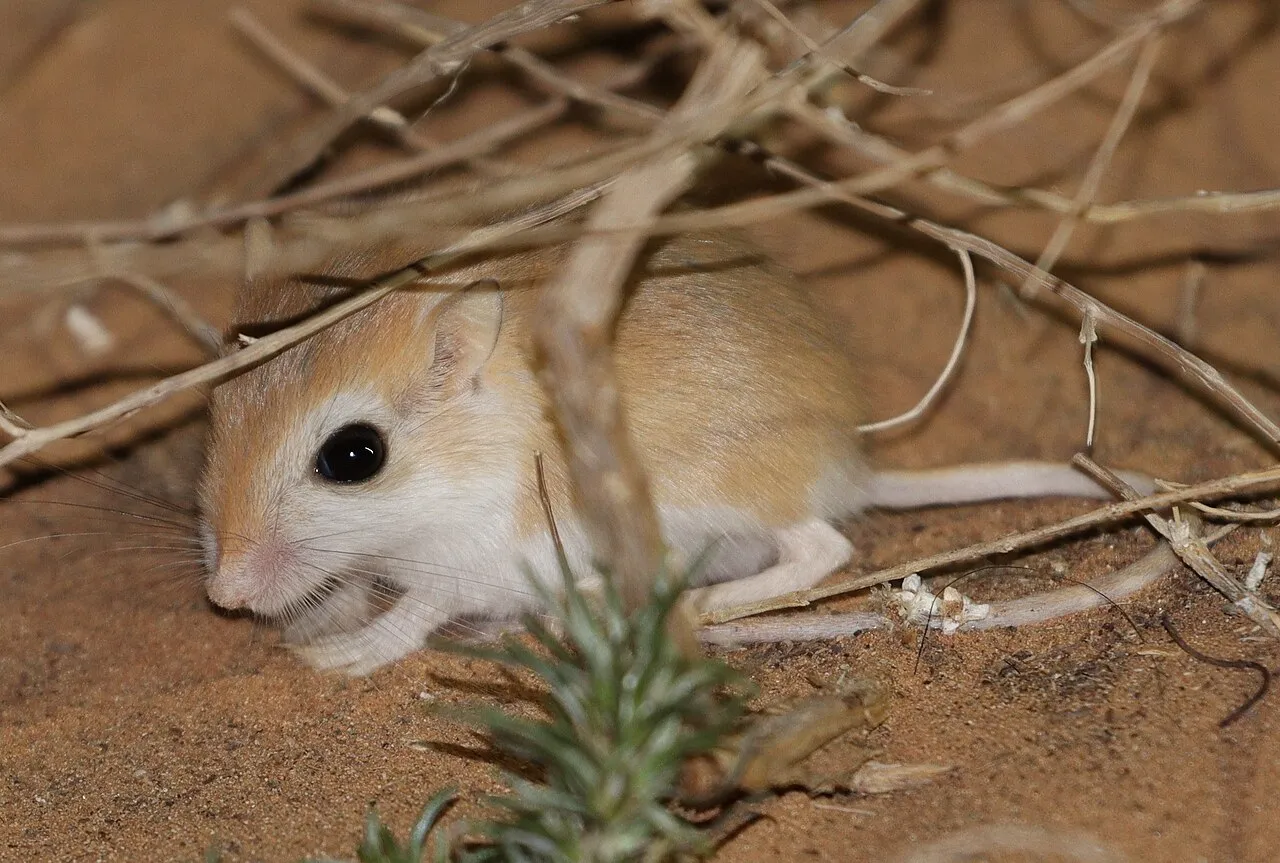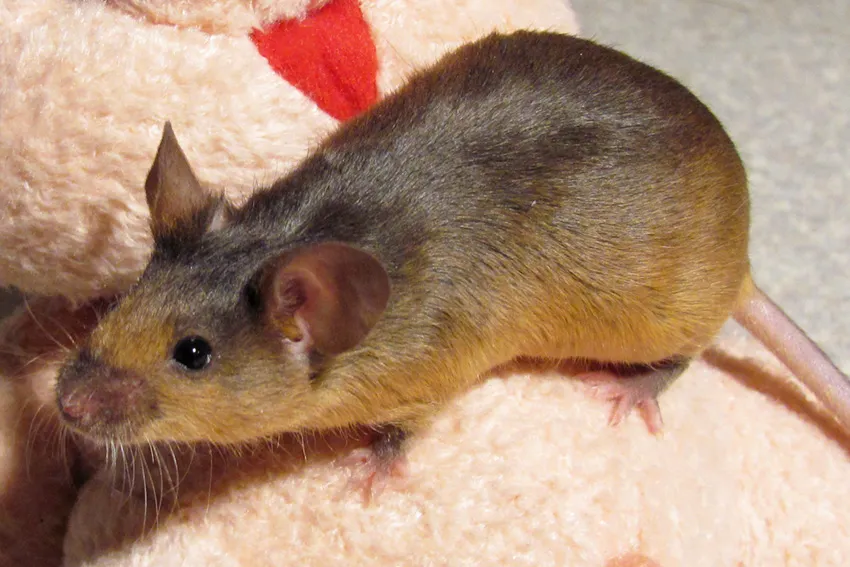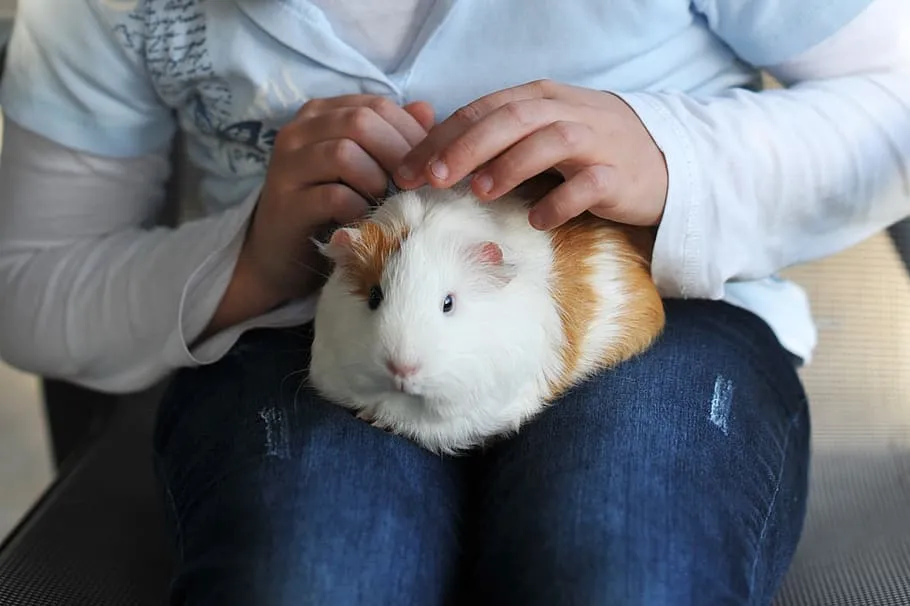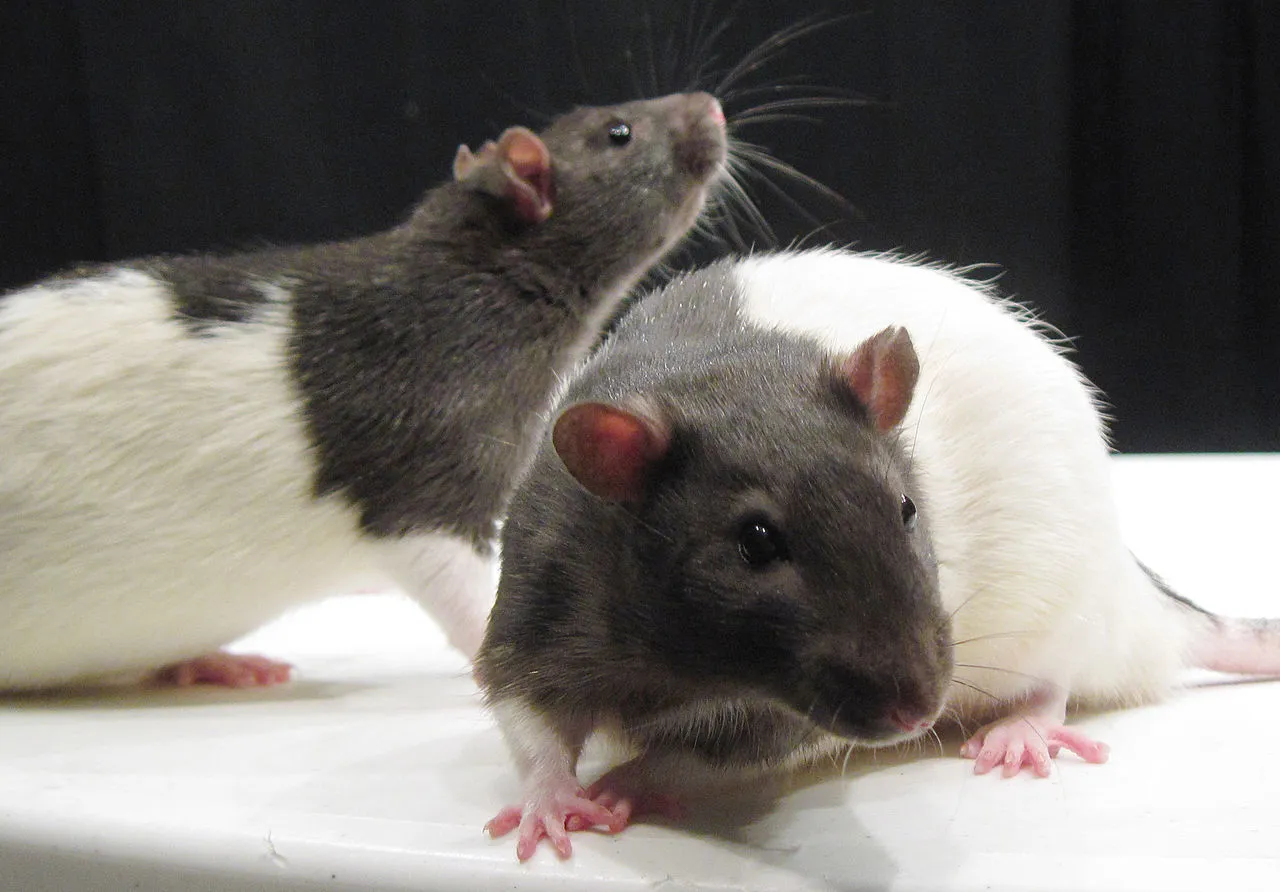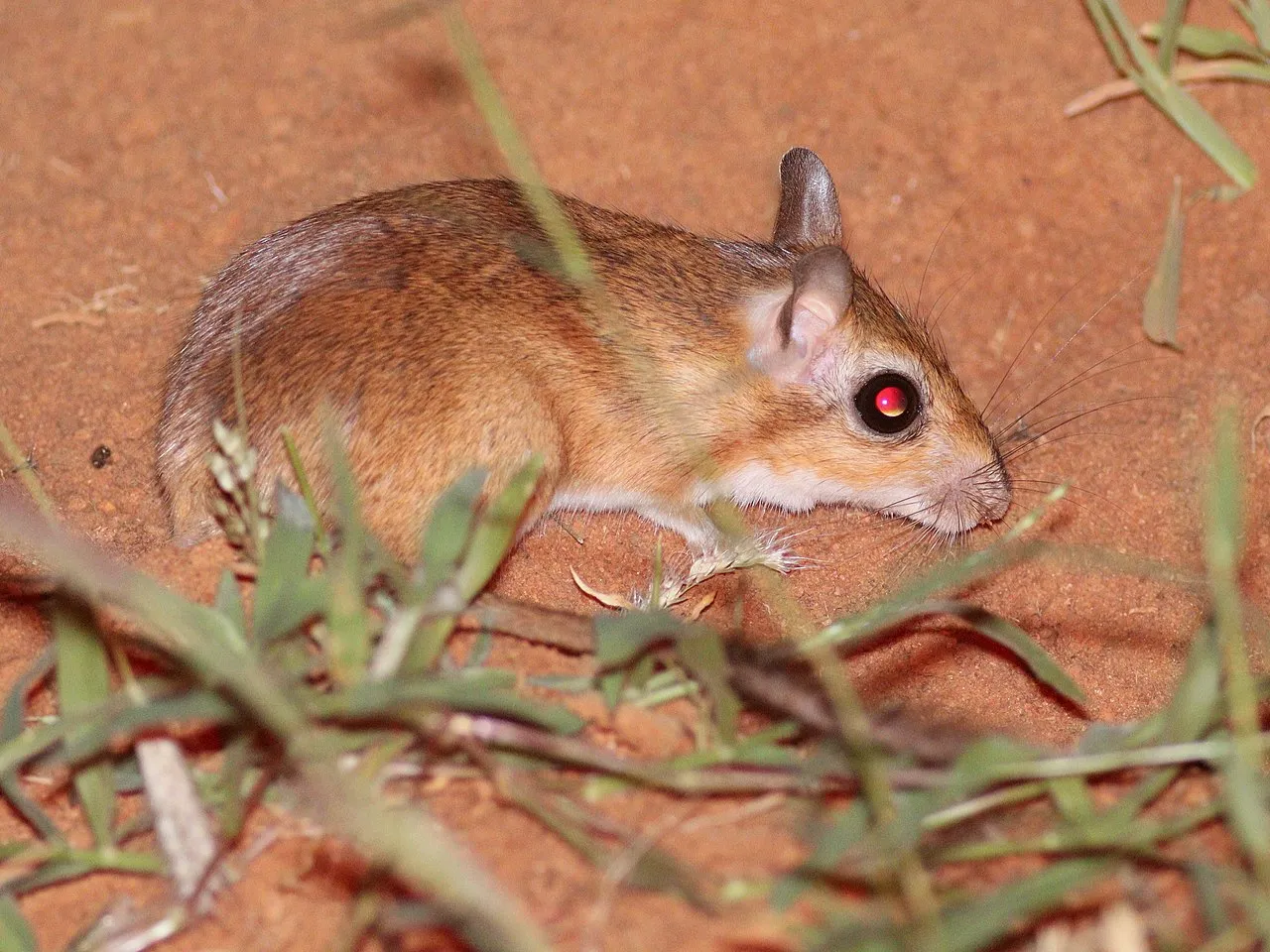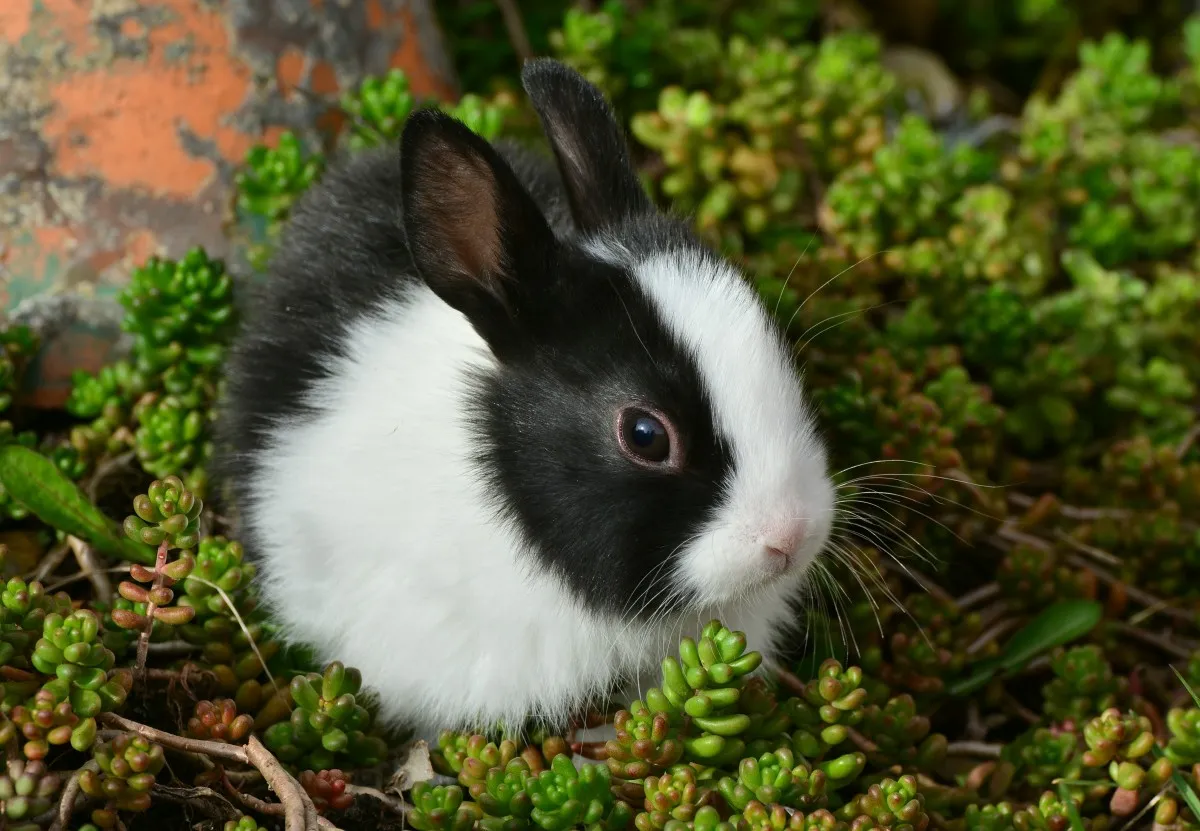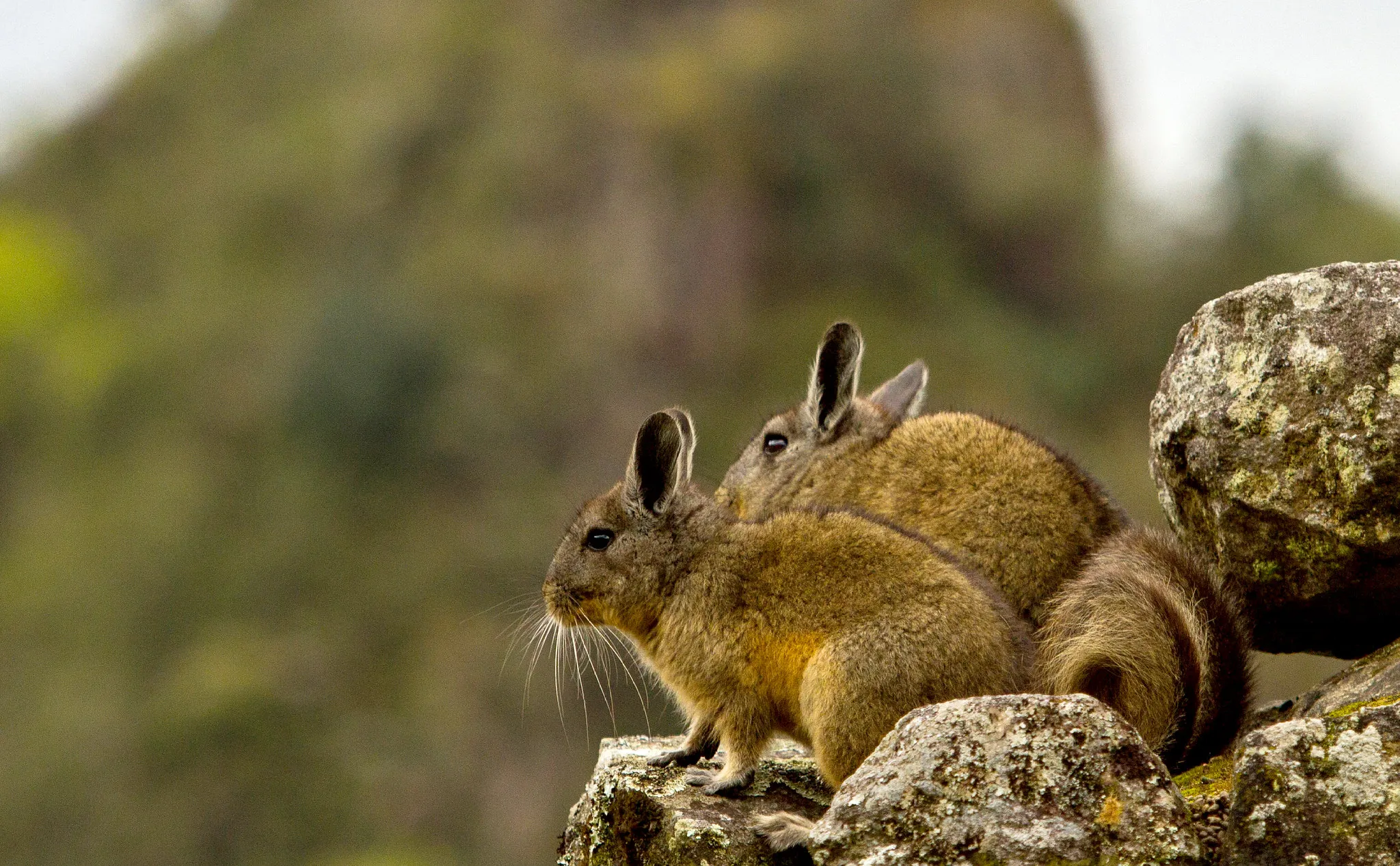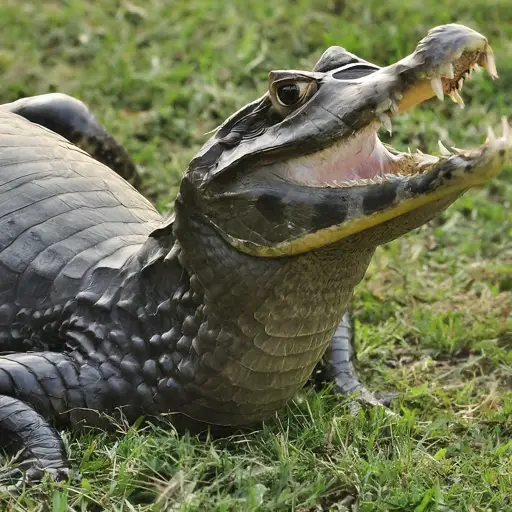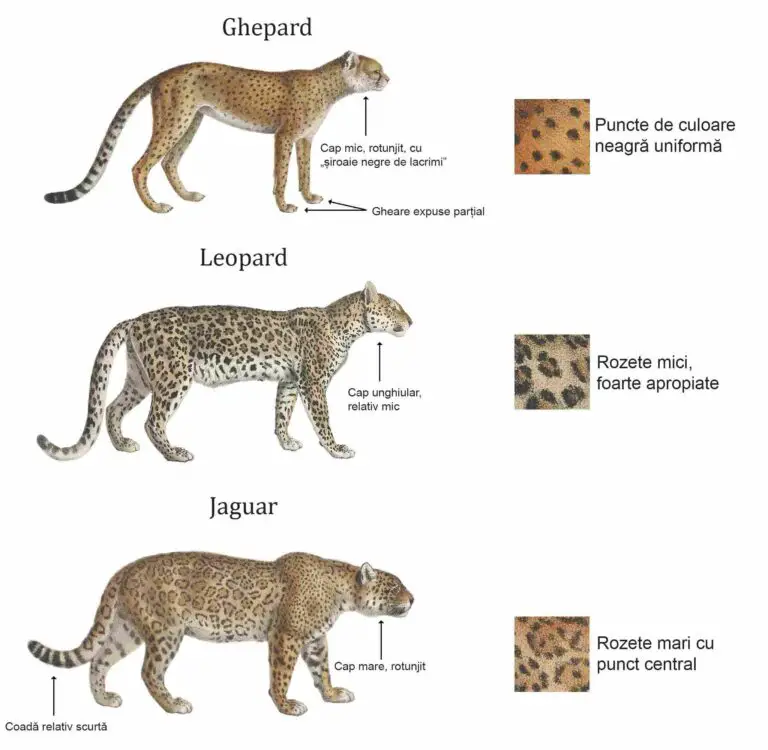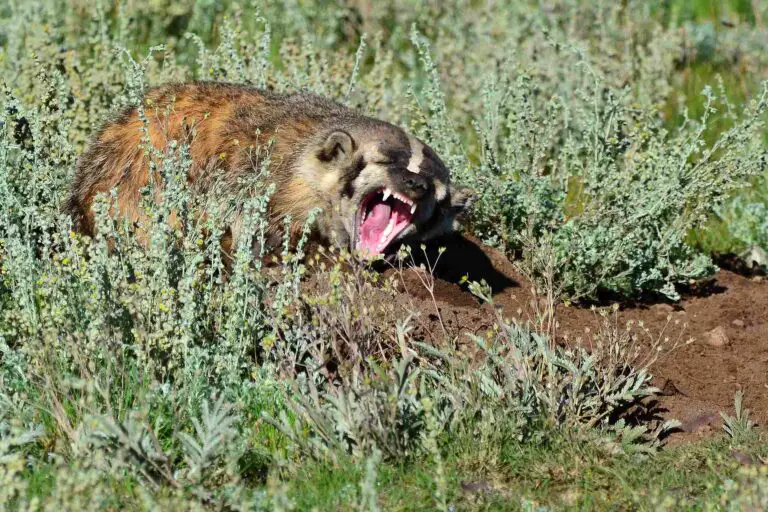Guinea Pig Vs Hamster Size, Weight, Intelligence, Overall Comparison
The exploration of guinea pigs versus hamsters provides insight into their suitability as pets, considering factors like size, interaction preferences, and overall cost. A guinea pig is generally larger, heavier, and stronger than a hamster, while being more social and interactive.
I. Size and Interaction Preferences:
– Guinea pigs, being larger and more social animals, are ideal for those seeking companionship and interactive pets. On the other hand, hamsters, smaller and more independent, may be suitable for those preferring a low-maintenance pet with less interaction.
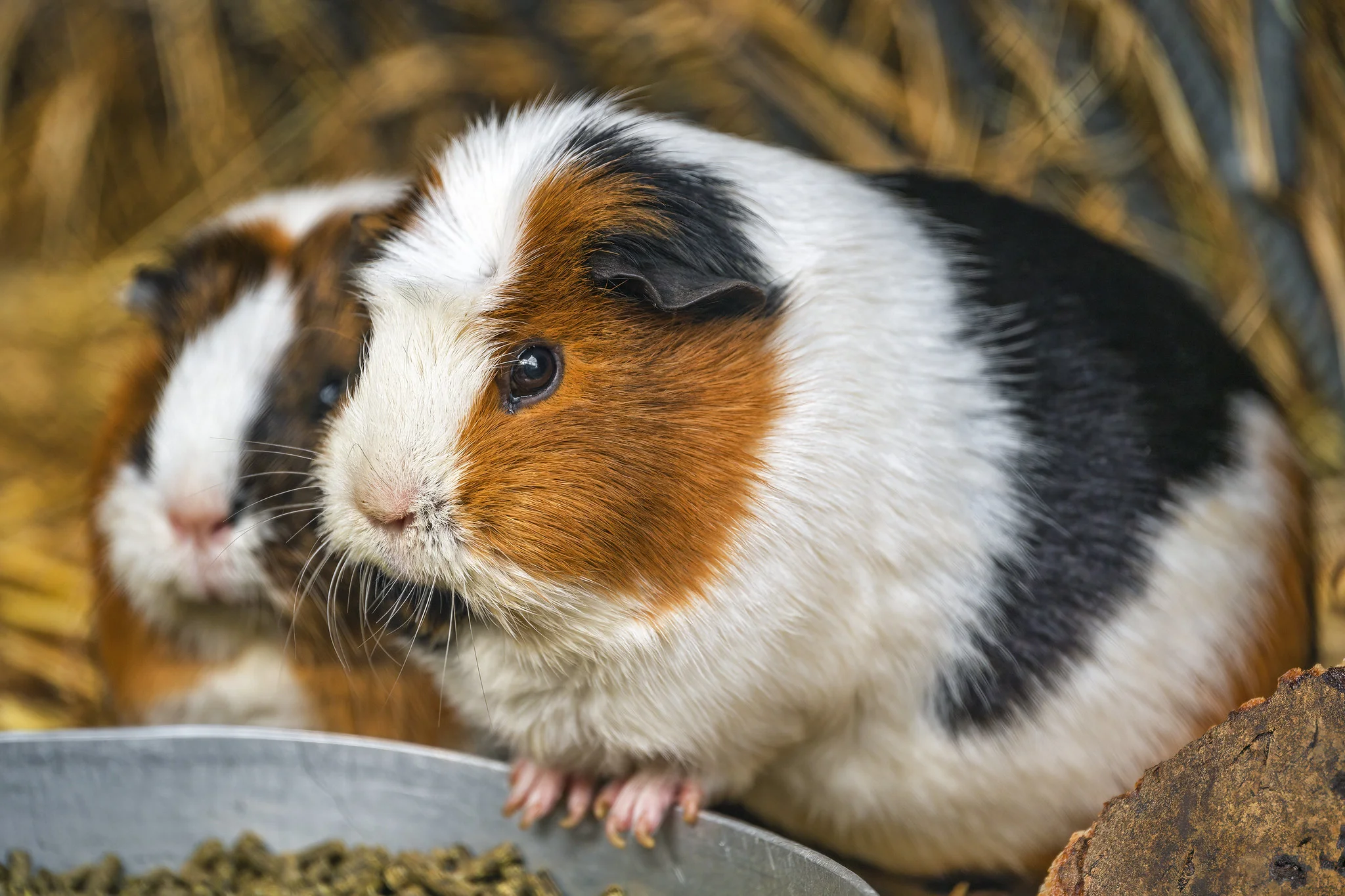
II. Lifespan:
– Guinea pigs generally live longer, around 5-7 years, emphasizing their suitability for those seeking a longer-term commitment. Hamsters, with a typical lifespan of 2-3 years, offer a shorter-term pet option.
III. Cost Considerations:
– The cost of caring for guinea pigs, including larger cages, bedding, and food, may be higher compared to hamsters. Potential pet owners should consider budget constraints when deciding between the two.
IV. Suitability as Pets:
– Guinea pigs, due to their greater size, social nature, and longer lifespan, are considered affectionate and engaging pets. Hamsters, with their smaller size and less social behavior, may be preferable for individuals seeking less interaction and a shorter-term commitment.
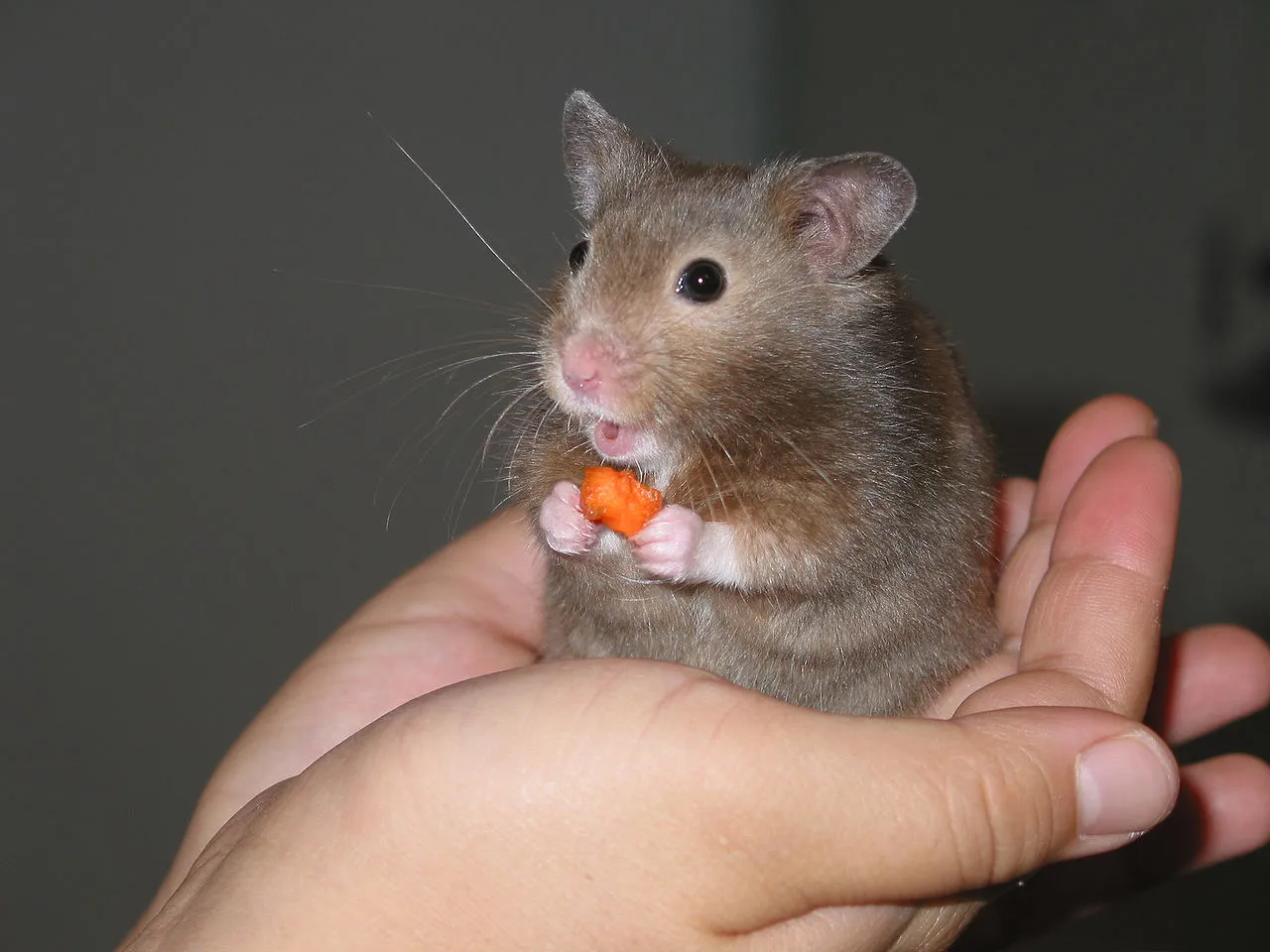
V. Choosing the Right Pet:
– The decision between a guinea pig and a hamster as a pet depends on individual preferences, interaction expectations, and the ability to commit to the pet’s lifespan. Guinea pigs offer a more social and extended companionship, while hamsters provide a lower-maintenance option with shorter-term commitment.
*Details of Comparison
| Criteria | Guinea Pig | Hamster |
| Taxonomy | Family Caviidae, Genus Cavia, Species C. porcellus |
Family Cricetidae, Subfamily Cricetinae, Several Genera
|
| Appearance | Rounded body, compact build, varied fur colors |
Smaller, elongated body, cheek pouches, short tail
|
| Size | 8 to 12 inches in length |
2 to 7 inches in length
|
| Weight | 1.5 to 2.6 pounds | 1 to 6 ounces |
| Dentition and Bite Force (PSI) | Herbivorous, moderate bite force |
Omnivorous, strong bite force for size
|
| Physical Offensive Advantages | Limited offensive capabilities |
Sharp incisors and agility for defense
|
| Physical Defensive Advantages | Relies on social structures |
Uses agility, burrowing, nocturnal behavior
|
| Speed | 5 to 10 mph | Up to 6 mph |
| Agility | Moderate agility |
Highly agile, adapted for swift movements
|
| Senses | Good hearing and smell, large eyes |
Well-developed smell, excellent night vision, sensitive whiskers
|
| Overall Physical Capacity | Adapted for herbivorous diet |
Versatile physical abilities, including agility and digging
|
| Habitat Preference(s) and Geographic Region | South America, grassy plains, forests |
Varied habitats across Europe, Asia, Middle East
|
| Tracks | Small, evenly spaced prints |
Varies, may include footprints and tail marks
|
| Lifespan | 4 to 8 years |
2 to 4 years in the wild, up to 4 years in captivity
|
| Mode of Feeding | Herbivores |
Omnivores with a varied diet
|
| Intelligence | Social intelligence |
Problem-solving abilities
|
| Social Behavior | Highly social |
Generally solitary
|
| Mode of Reproduction | Polyestrous, longer gestation, smaller litters |
Polyestrous, shorter gestation, larger litters
|
| Parental Behavior | Strong parental care |
Strong parental care
|
| Proximity to Human-Inhabited Areas | Adapt to living near human settlements |
Adapt to living near human settlements
|
| Behavior Toward Humans | Docile and social |
Variable, but many can be tamed
|
| Danger Posed to Humans | Generally not dangerous |
Generally not dangerous, may bite if threatened
|
| Associated Precautions | Similar precautions for hygiene and safe handling |
Similar precautions for hygiene and safe handling
|
| Conservation Status | Stable populations |
Some species near-threatened or vulnerable
|
1. Taxonomy
Guinea Pig:
Kingdom: Animalia
Phylum: Chordata
Class: Mammalia
Order: Rodentia
Family: Caviidae
Genus: Cavia
Species: C. porcellus
Hamster:
Kingdom: Animalia
Phylum: Chordata
Class: Mammalia
Order: Rodentia
Family: Cricetidae
Subfamily: Cricetinae
Genera: Several (e.g., Mesocricetus, Phodopus, Cricetus)
2. Appearance
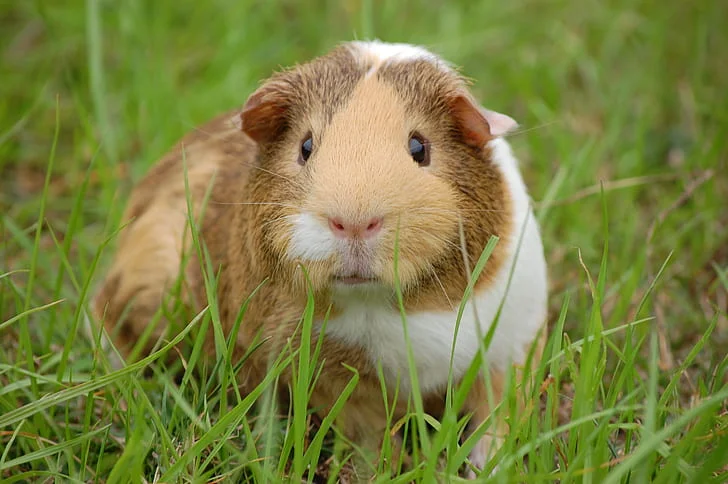
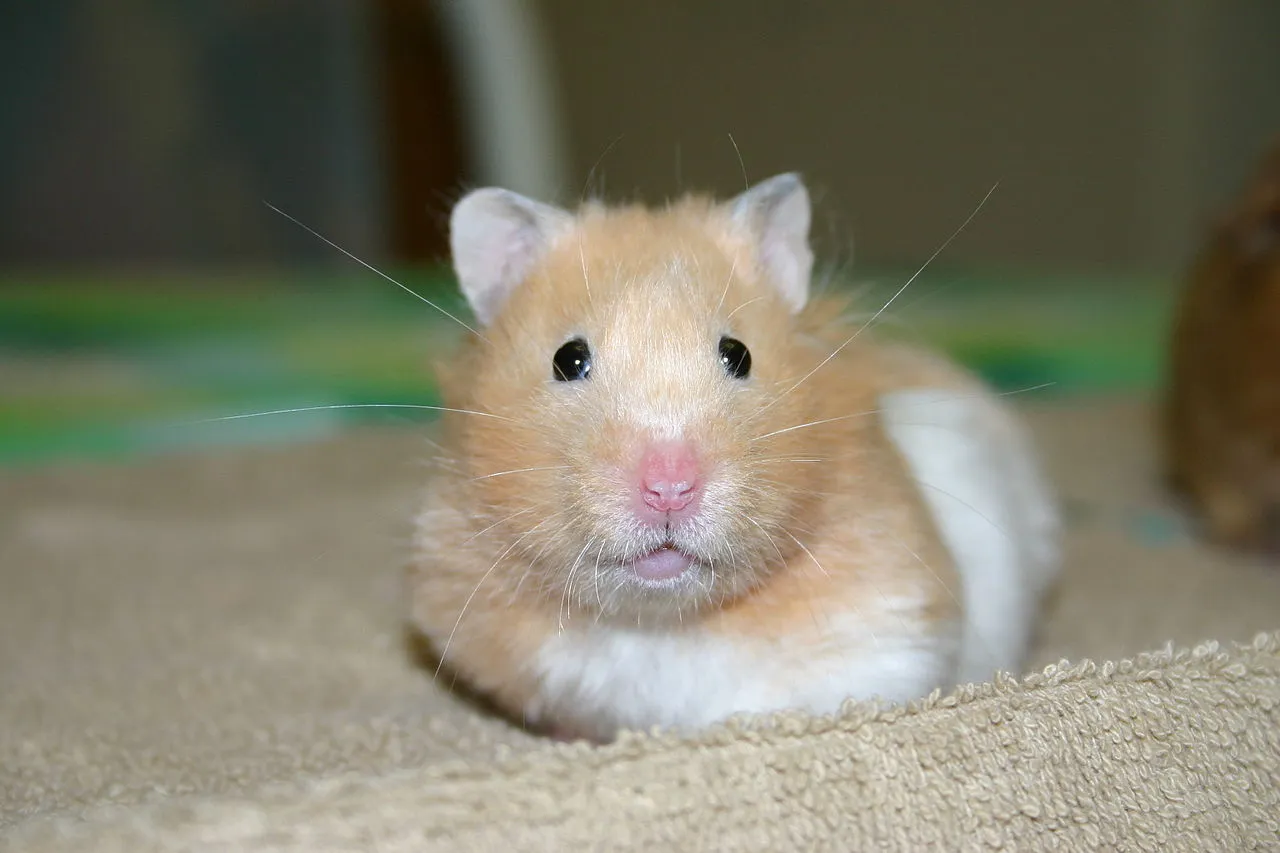
Guinea Pig:
Rounded body, compact build, and a stout, short neck.
Covered in dense fur, which can vary in color and texture.
Rounded head with small ears and eyes.
Hamster:
Generally smaller with a more elongated body.
Shorter legs and a distinctively short, furry tail.
Prominent cheek pouches for storing food.
Comparison: Guinea pigs are larger and have a more robust appearance compared to the smaller, sleeker build of hamsters.
Ecological Implications: These differences in appearance may relate to their respective ecological roles, with guinea pigs potentially adapted for different foraging strategies or environmental conditions compared to hamsters.
3. Size
Guinea Pig:
Adult length: 8 to 12 inches (20 to 30 cm).
Adult weight: 1.5 to 2.6 pounds (700 to 1200 grams).
Hamster:
Adult length: 2 to 7 inches (5 to 18 cm), depending on the species.
Adult weight: 1 to 6 ounces (30 to 170 grams).
Comparison: Guinea pigs are generally larger in both length and weight compared to hamsters.
Ecological Implications: Size differences may affect their roles in ecosystems, influencing their ability to access resources, escape predators, and interact with other species.
4. Weight
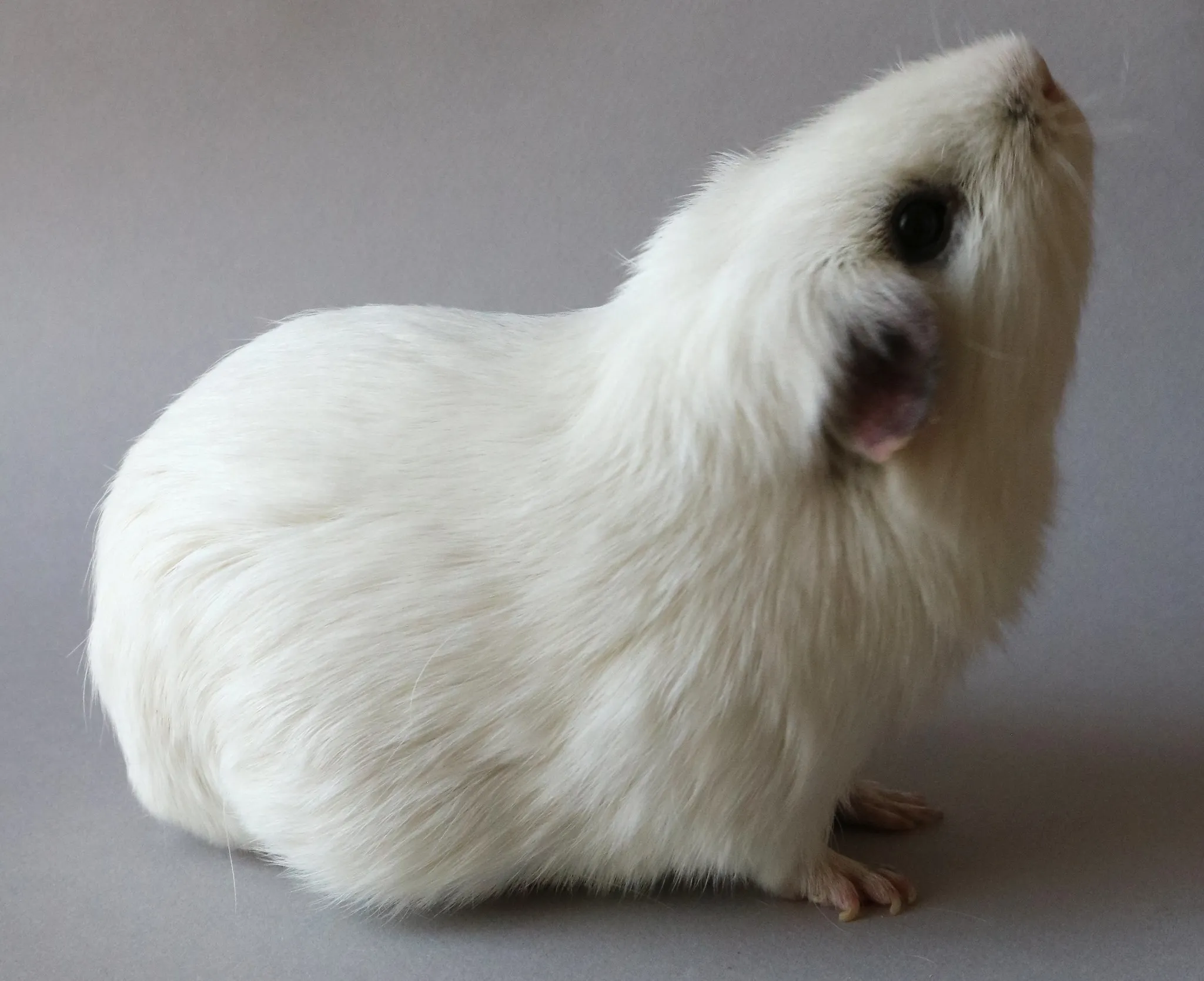
Guinea Pig:
Adults typically weigh between 1.5 to 2.6 pounds (700 to 1200 grams).
Hamster:
Adult weight ranges from 1 to 6 ounces (30 to 170 grams), depending on the species.
Comparison: Guinea pigs are significantly heavier than hamsters.
Ecological Implications: Weight can impact dietary needs, energy requirements, and predator-prey dynamics within their respective ecosystems.
5. Dentition and Bite Force (PSI)
Guinea Pig:
Herbivorous with continuously growing incisors.
Bite force: Not well-documented, but generally moderate.
Hamster:
Omnivorous with sharp incisors suitable for gnawing.
Bite force: Relatively strong for their size, aiding in food processing.
Comparison: While both rodents have incisors, guinea pigs are primarily herbivores, whereas hamsters have a more varied diet, influencing their dental adaptations.
Ecological Implications: Dental adaptations and bite force are crucial for their feeding habits, influencing their roles as herbivores or omnivores within ecosystems.
6. Physical Offensive Advantages
Guinea Pig:
Limited offensive capabilities, relying on social structures for defense.
Hamster:
Sharper incisors and agility may provide a defensive advantage if threatened.
Comparison: Hamsters possess a potential offensive advantage through their sharp incisors, allowing them to defend against threats more actively than guinea pigs.
Ecological Implications: The offensive capabilities of hamsters may influence their interactions with other species in the ecosystem, affecting predation dynamics and competition for resources.
7. Physical Defensive Advantages
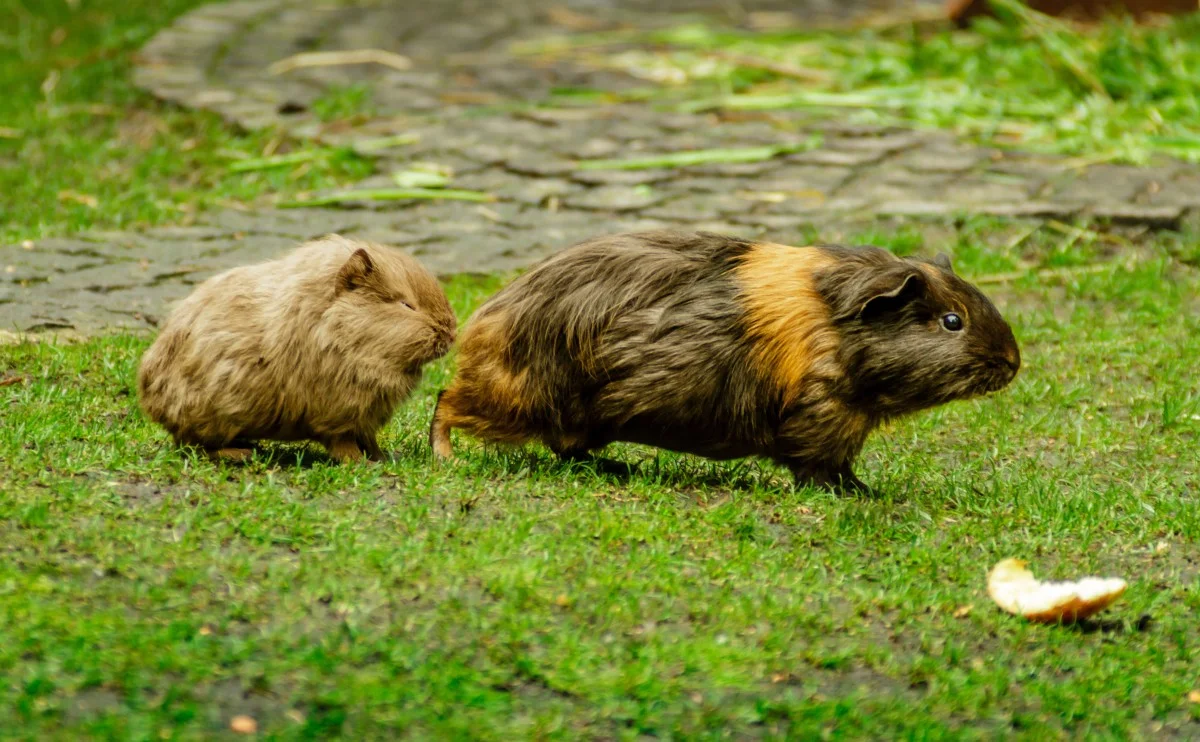
Guinea Pig:
Social structures and group defense mechanisms.
Hamster:
Agility, ability to burrow, and nocturnal behavior contribute to defensive strategies.
Comparison: Guinea pigs rely on social structures for defense, while hamsters utilize their physical traits and behavior for protection.
Ecological Implications: Defensive adaptations influence their survival strategies in different ecological niches, impacting interactions with predators and competitors.
8. Speed (Km/hour or Mile/hour)
Guinea Pig:
Relatively slow runners, with an average speed of around 5 to 10 mph.
Hamster:
Agile runners, capable of reaching speeds up to 6 mph.
Comparison: Hamsters demonstrate greater speed compared to guinea pigs.
Ecological Implications: Speed affects their ability to escape predators and find food, shaping their roles within their respective ecosystems.
9. Agility
Guinea Pig:
Moderate agility, adapted for a more sedentary lifestyle.
Hamster:
Highly agile, equipped for swift movements and the ability to navigate through tunnels and burrows.
Comparison: Hamsters exhibit superior agility, reflecting their burrowing behavior and nocturnal activities.
Ecological Implications: Agility influences their foraging efficiency, ability to escape predators, and utilization of specific habitats within their ecosystems.
10. Senses
Guinea Pig:
Good sense of hearing and smell, with relatively large eyes.
Hamster:
Well-developed sense of smell, excellent night vision, and sensitive whiskers.
Comparison: Both rodents have keen senses, but hamsters excel in night vision and whisker sensitivity, possibly adapted for their nocturnal lifestyle.
Ecological Implications: Enhanced senses contribute to their survival strategies, impacting their ability to locate food, navigate their environment, and detect potential threats.
11. Overall Physical Capacity
Guinea Pig:
Well-adapted for a herbivorous diet, with a focus on digestion.
Hamster:
Versatile physical abilities, including agility, digging, and climbing.
Comparison: Guinea pigs are specialized for herbivorous activities, while hamsters showcase a broader range of physical capabilities.
Ecological Implications: Physical capacities influence their ecological roles, such as foraging efficiency, habitat utilization, and interactions with other species.
12. Habitat Preference(s) and Geographic Region
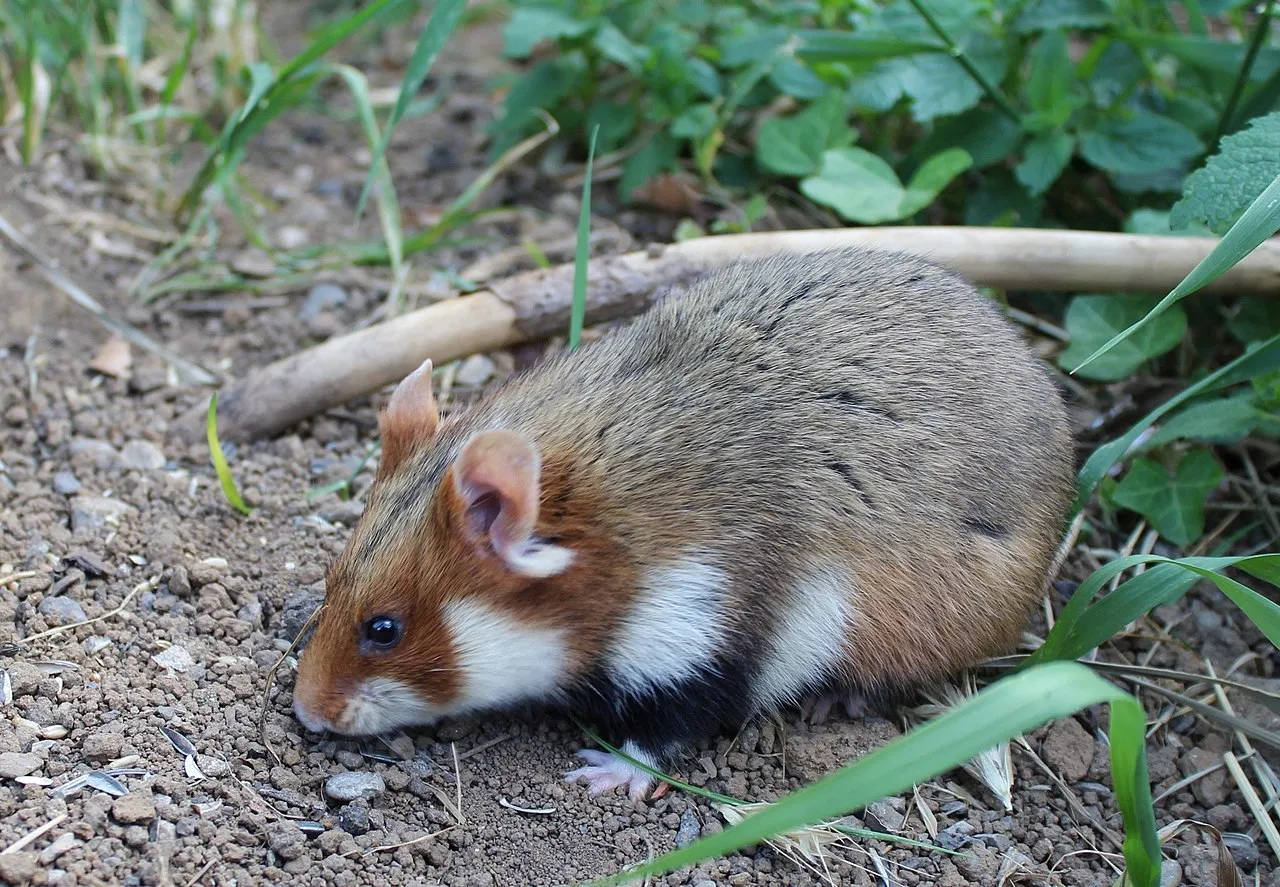
Guinea Pig:
Native to South America, preferring grassy plains and forests.
Hamster:
Found in various habitats, including deserts, steppes, and forests, across Europe, Asia, and the Middle East.
Comparison: Guinea pigs are native to a specific region in South America, while hamsters exhibit a broader geographic distribution across multiple continents.
Ecological Implications: Habitat preferences impact their roles in different ecosystems, influencing diet, behavior, and interactions with other species.
13. Tracks
Guinea Pig:
Leave distinctive tracks with small, evenly spaced prints.
Hamster:
Tracks may vary based on species, but generally show a mix of footprints and tail marks.
Comparison: Guinea pig tracks are characterized by small, neat prints, while hamster tracks may include tail marks, reflecting differences in anatomy and behavior.
Ecological Implications: Tracking patterns provide insights into their movements, foraging behavior, and interactions with the environment and other species.
14. Lifespan
Guinea Pig:
Average lifespan ranges from 4 to 8 years, influenced by factors such as diet and genetics.
Hamster:
Lifespan varies by species, with an average of 2 to 3 years in the wild and up to 4 years in captivity.
Comparison: Guinea pigs generally have a longer lifespan compared to hamsters.
Ecological Implications: Differences in lifespan can impact population dynamics and reproductive strategies, influencing their roles within ecosystems.
15. Mode of Feeding
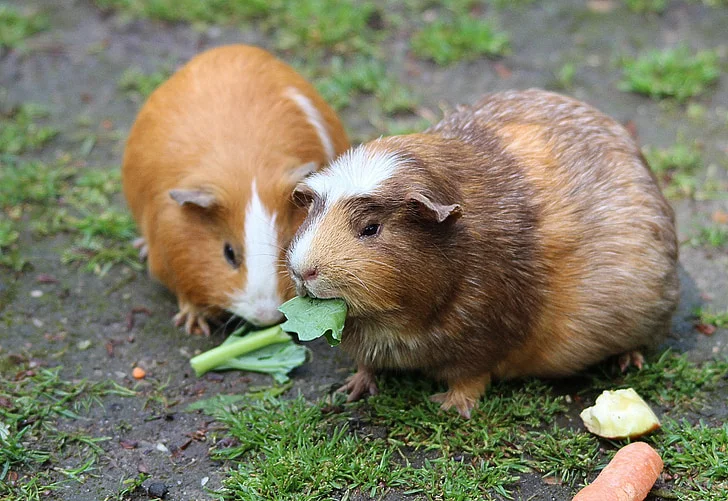
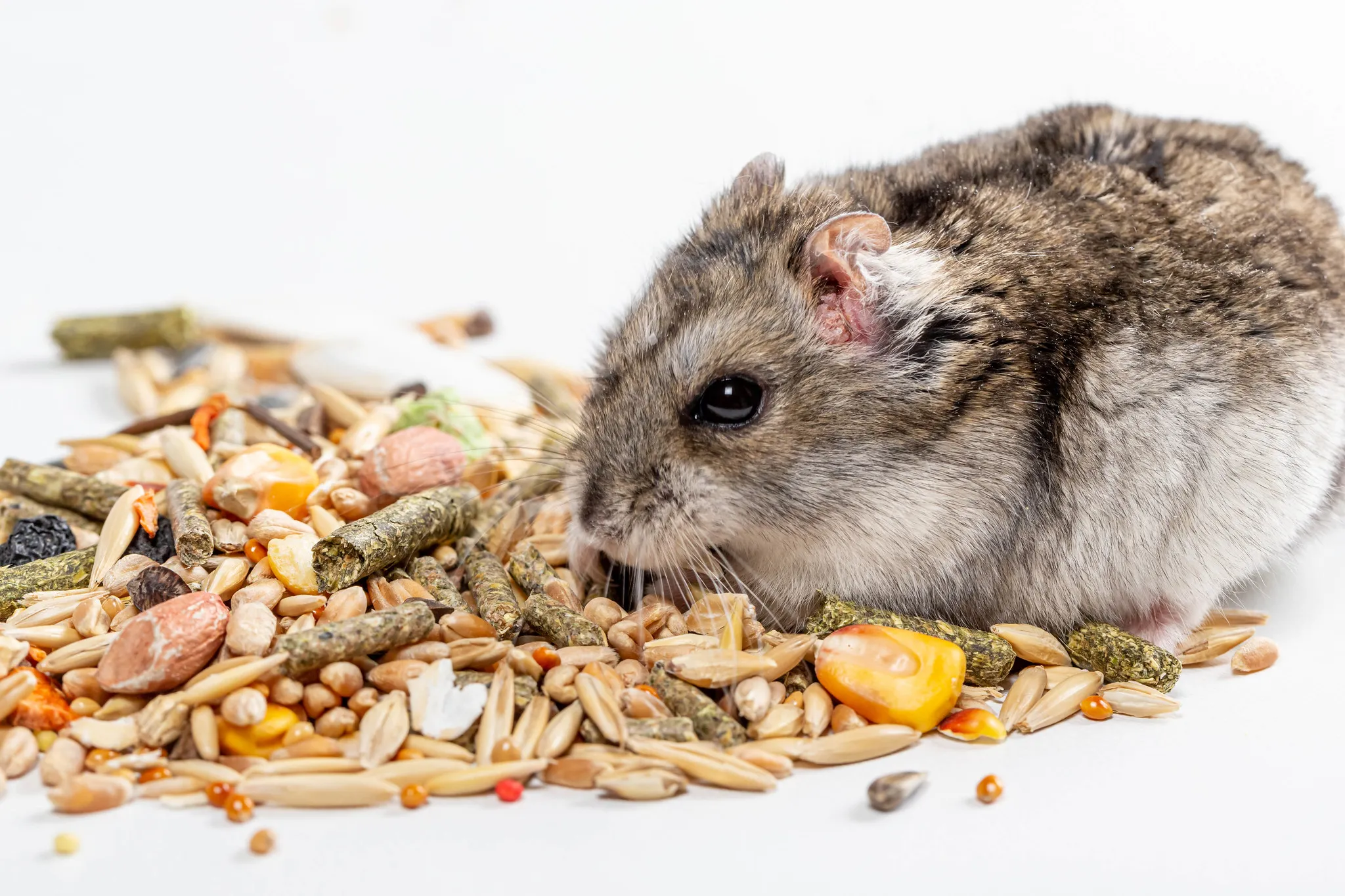
Guinea Pig:
Herbivores, primarily consuming grasses, hay, and vegetables.
Hamster:
Omnivores with a varied diet, including seeds, fruits, vegetables, and occasional insects.
Comparison: Guinea pigs are specialized herbivores, while hamsters have a more flexible, omnivorous diet.
Ecological Implications: Dietary preferences affect their ecological niche, shaping their roles as herbivores or omnivores within their respective ecosystems.
16. Guinea Pig Vs Hamster Intelligence
Guinea Pig:
Exhibits social intelligence, forming bonds with others in their group.
Hamster:
Displays problem-solving abilities, such as escaping enclosures and finding food.
Comparison: Guinea pigs excel in social intelligence, while hamsters demonstrate problem-solving skills.
Ecological Implications: Differences in intelligence influence their behavior, communication, and adaptability, impacting interactions within their ecosystems.
17. Social Behavior
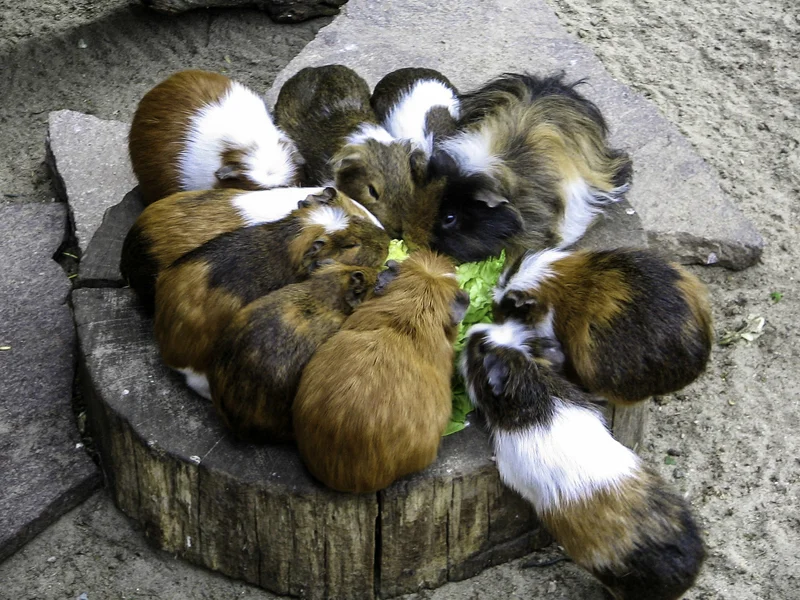
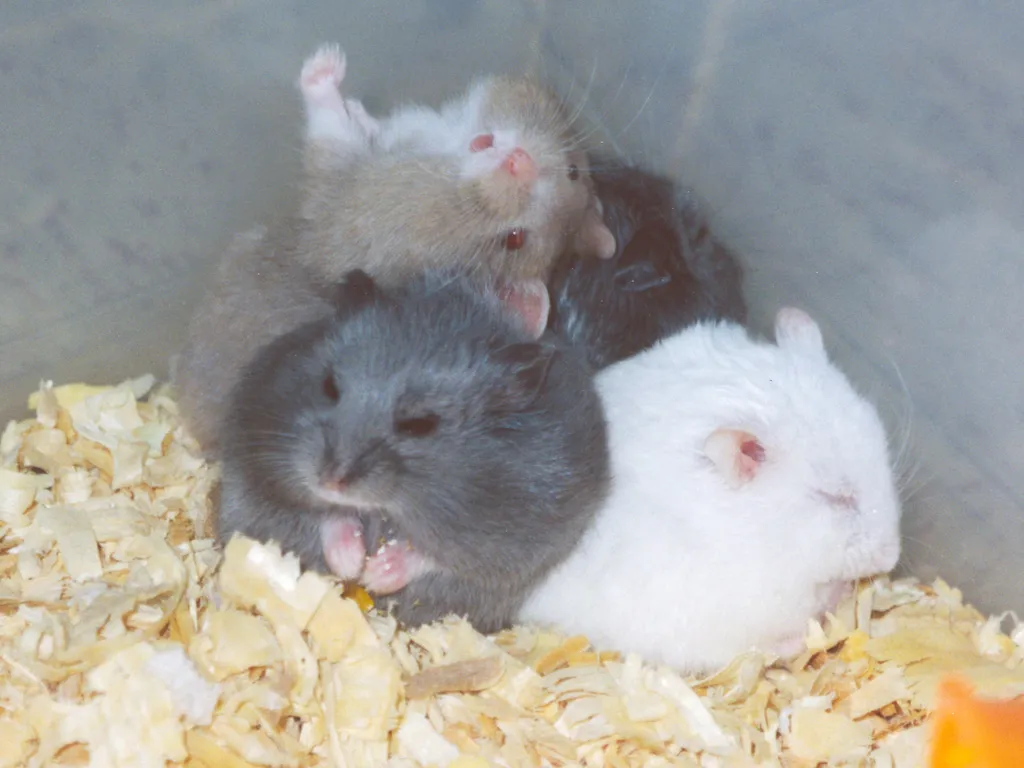
Guinea Pig:
Highly social animals, thrive in groups with clear hierarchies.
Hamster:
Generally solitary, with limited tolerance for cohabitation.
Comparison: Guinea pigs are social animals, whereas hamsters typically prefer solitary lifestyles.
Ecological Implications: Social behaviors affect their roles in ecosystems, influencing communication, cooperation, and competition within their respective habitats.
18. Mode of Reproduction
Guinea Pig:
Polyestrous, capable of breeding throughout the year.
Gestation period is around 59 to 72 days, and they usually give birth to multiple offspring (2 to 4 pups).
Hamster:
Also polyestrous but may have specific breeding seasons.
Gestation period varies by species, generally between 16 to 23 days, and they typically have larger litters (4 to 12 pups).
Comparison: While both are polyestrous, guinea pigs have a longer gestation period and smaller litters compared to hamsters.
Ecological Implications: Reproductive strategies impact population dynamics, and variations in gestation periods and litter sizes contribute to different ecological roles.
19. Parental Behavior
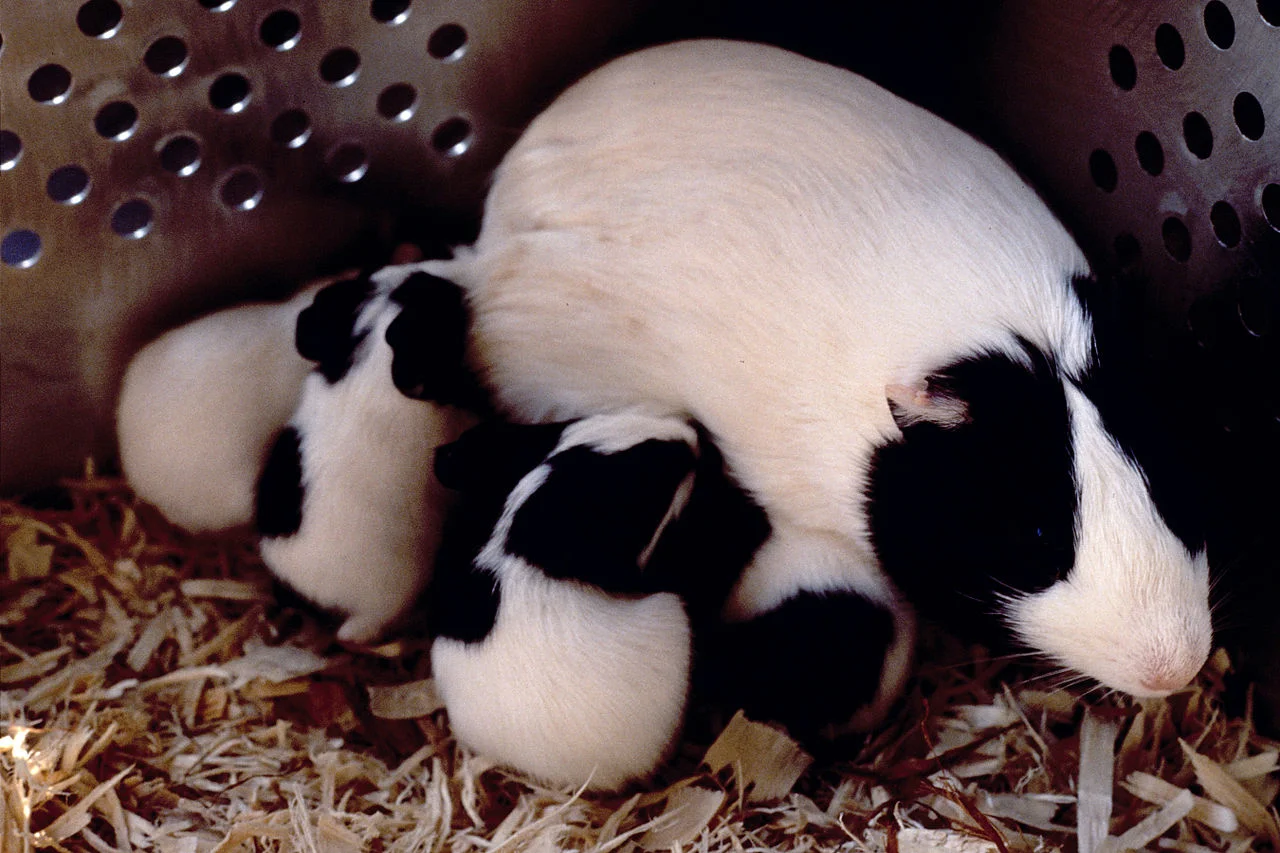
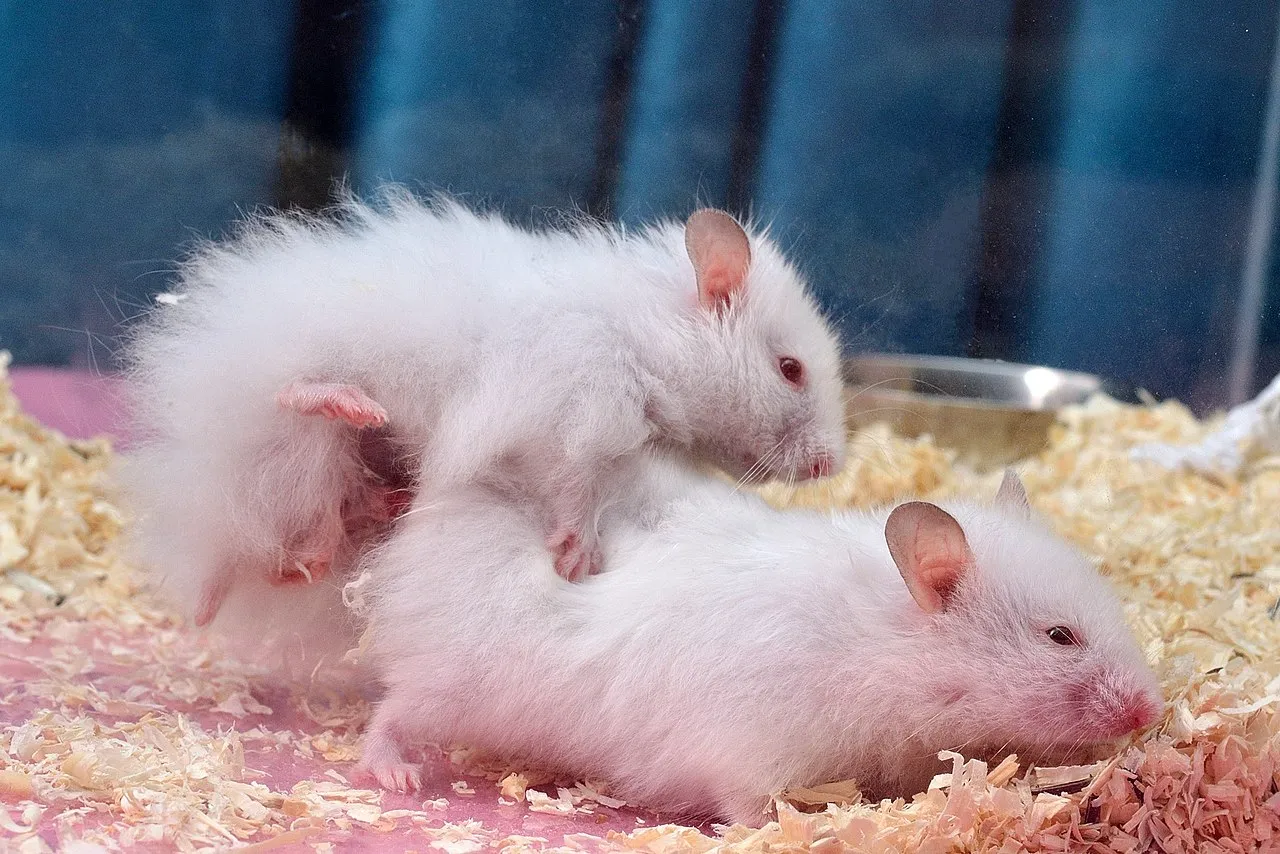
Guinea Pig:
Mothers exhibit strong maternal care, nursing and protecting their pups.
Hamster:
Mothers are also attentive, providing care and protection to their larger litters.
Comparison: Both guinea pigs and hamsters display strong parental behaviors.
Ecological Implications: Parental care contributes to the survival of offspring, affecting population dynamics and ensuring the successful integration of the young into the ecosystem.
20. Proximity to Human-Inhabited Areas
Guinea Pig:
Commonly kept as pets and used in research, often residing in close proximity to human homes.
Hamster:
Popular as pets, but some species may also inhabit fields and areas near human settlements.
Comparison: Both guinea pigs and hamsters have adapted to living in close proximity to human-inhabited areas.
Ecological Implications: Human interaction and domestication can influence their behavior, diet, and overall ecological impact in anthropogenic environments.
21. Behavior Toward Humans
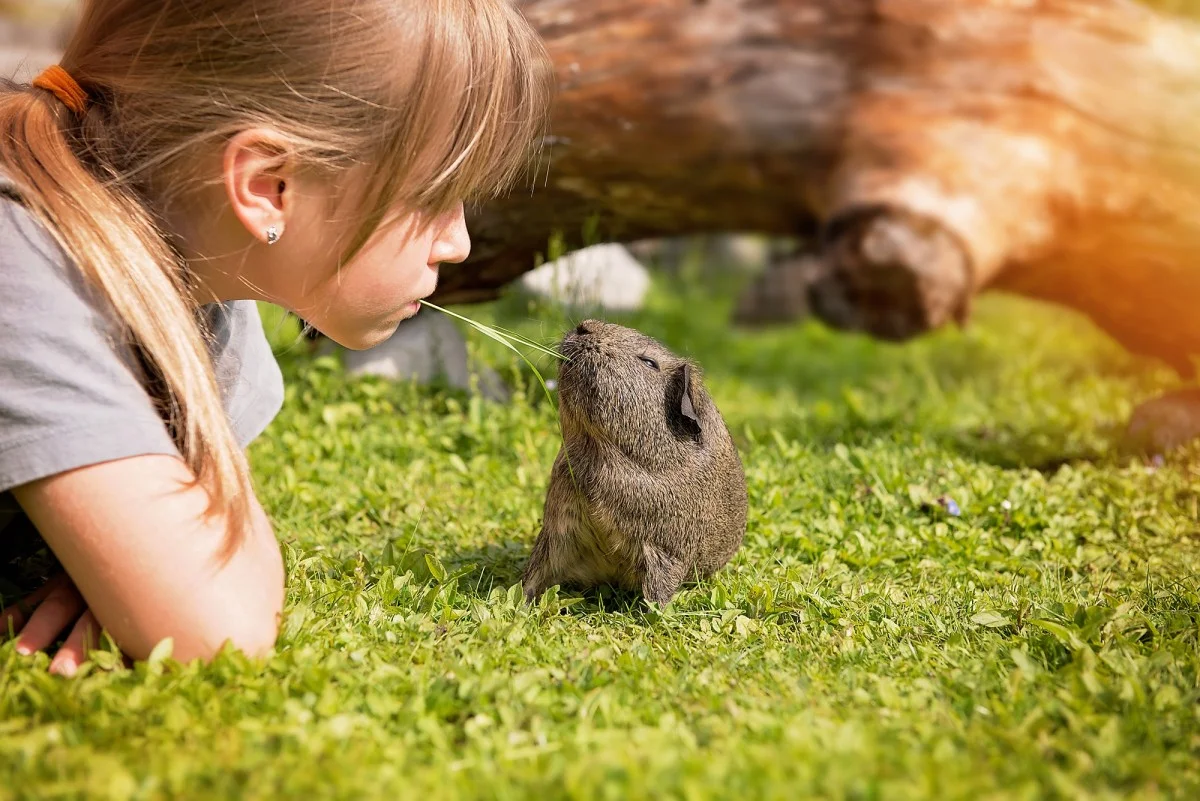
Guinea Pig:
Generally docile and social, forming bonds with human caregivers.
Hamster:
Individual personalities vary, but many hamsters can be tamed and become accustomed to human handling.
Comparison: Both guinea pigs and hamsters can exhibit positive interactions with humans, with individual variations in behavior.
Ecological Implications: The ease of forming bonds with humans can influence their roles in domestic settings and as research subjects, impacting their well-being and ecological interactions.
22. Danger Posed to Humans
Guinea Pig:
Typically pose minimal danger to humans; their primary defense is avoidance or seeking refuge.
Hamster:
Generally not dangerous, but they may bite if they feel threatened or cornered.
Comparison: Both guinea pigs and hamsters are not inherently dangerous to humans, but hamsters may resort to biting in certain situations.
Ecological Implications: Limited danger to humans allows for easier coexistence in domestic and research settings, impacting human-wildlife interactions.
23. Associated Precautions
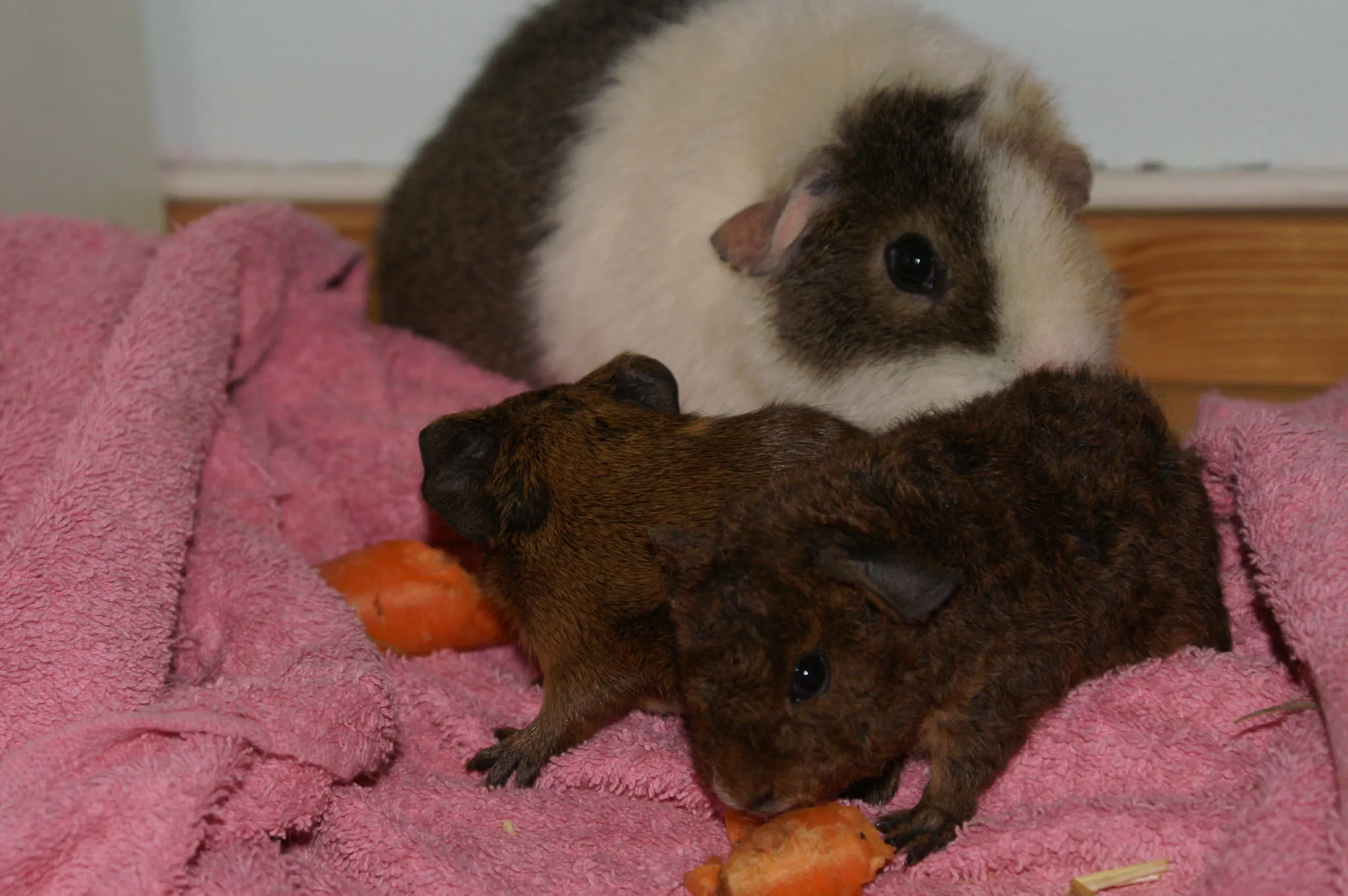
Guinea Pig:
Generally safe, but hygiene measures should be followed to prevent zoonotic diseases.
Hamster:
Careful handling to avoid bites; hygiene precautions also recommended.
Comparison: Similar precautions are necessary for both guinea pigs and hamsters, emphasizing hygiene and safe handling practices.
Ecological Implications: Understanding and implementing precautions contribute to the well-being of these animals in captivity and research settings.
24. Conservation Status
Guinea Pig:
Domesticated breeds are common as pets; wild populations are stable.
Hamster:
Some species are listed as near-threatened or vulnerable due to habitat loss and degradation.
Comparison: While domesticated guinea pigs are abundant, certain hamster species face conservation concerns.
Ecological Implications: Conservation status reflects the impact of human activities on natural habitats, influencing the survival and diversity of these rodents in the wild.
*Summary of Comparison
Taxonomy:
Guinea Pig: Family Caviidae, Genus Cavia, Species C. porcellus.
Hamster: Family Cricetidae, Subfamily Cricetinae, Several Genera (e.g., Mesocricetus, Phodopus, Cricetus).
Appearance:
Guinea Pig: Rounded body, compact build, varied fur colors.
Hamster: Smaller, elongated body, cheek pouches, short tail.
Size:
Guinea Pig: 8 to 12 inches in length.
Hamster: 2 to 7 inches in length.
Weight:
Guinea Pig: 1.5 to 2.6 pounds.
Hamster: 1 to 6 ounces.
Dentition and Bite Force (PSI):
Guinea Pig: Herbivorous, moderate bite force.
Hamster: Omnivorous, strong bite force for their size.
Physical Offensive Advantages:
Guinea Pig: Limited offensive capabilities.
Hamster: Sharp incisors and agility for defense.
Physical Defensive Advantages:
Guinea Pig: Relies on social structures.
Hamster: Uses agility, burrowing, and nocturnal behavior for defense.
Speed:
Guinea Pig: 5 to 10 mph.
Hamster: Up to 6 mph.
Agility:
Guinea Pig: Moderate agility.
Hamster: Highly agile, adapted for swift movements and burrowing.
Senses:
Guinea Pig: Good hearing and smell, large eyes.
Hamster: Well-developed smell, excellent night vision, sensitive whiskers.
Overall Physical Capacity:
Guinea Pig: Adapted for herbivorous diet.
Hamster: Versatile physical abilities, including agility and digging.
Habitat Preference(s) and Geographic Region:
Guinea Pig: South America, grassy plains, forests.
Hamster: Varied habitats across Europe, Asia, Middle East.
Tracks:
Guinea Pig: Small, evenly spaced prints.
Hamster: Varies, may include footprints and tail marks.
Lifespan:
Guinea Pig: 4 to 8 years.
Hamster: 2 to 4 years in the wild, up to 4 years in captivity.
Mode of Feeding:
Guinea Pig: Herbivores.
Hamster: Omnivores with a varied diet.
Intelligence:
Guinea Pig: Social intelligence.
Hamster: Problem-solving abilities.
Social Behavior:
Guinea Pig: Highly social.
Hamster: Generally solitary.
Mode of Reproduction:
Guinea Pig: Polyestrous, longer gestation, smaller litters.
Hamster: Polyestrous, shorter gestation, larger litters.
Parental Behavior:
Both exhibit strong parental care.
Proximity to Human-Inhabited Areas:
Both adapt to living near human settlements.
Behavior Toward Humans:
Guinea Pig: Docile and social.
Hamster: Variable, but many can be tamed.
Danger Posed to Humans:
Both generally not dangerous, though hamsters may bite if threatened.
Associated Precautions:
Similar precautions for hygiene and safe handling.
Conservation Status:
Guinea Pig: Stable populations.
Hamster: Some species near-threatened or vulnerable.
Conclusion
I. Similarities
Both guinea pigs and hamsters are rodents with common ancestry in the order Rodentia.
They share traits such as being popular as pets and having adaptations for survival in human-inhabited areas.
II. Differences
Guinea pigs are generally larger and have a longer lifespan compared to hamsters.
Hamsters exhibit greater agility, a broader diet, and a more varied geographic distribution.
Guinea pigs are highly social, while hamsters are typically solitary, impacting their social behaviors and ecological roles.
Conservation concerns are more pronounced for certain hamster species compared to guinea pigs.
